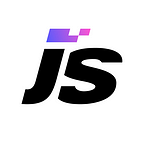The Benefits of Riskiest Assumption Test (RAT) in Prioritization
We’ve been talking with Alexey Kulakov, JetStyle’s co-founder and CEO, about his startup mentoring experience. He shares insights about implementation of popular frameworks into your prioritization workflow.
In this article we talk about “RAT” — Riskiest Assumption Test.
What is it used for?
When it comes to hypothesis testing, there’s a tricky debate. Some believe that we should first identify the market and ensure it’s a growing niche; only after that we start making profit out of it.
Others argue that we should first prove we deliver value, and then figure out our target audience.
The Riskiest Assumption Test (RAT) is a method to choose the path.
Typically, we view risks as negative events. According to RAT, risks are any events, positive or negative, that potentially can influence the business development. The hypotheses we develop can be related to both positive and negative events, so they should be prioritized within one flow.
When we deal with a negative hypothesis, our core question is this: “How much will it impact the business if it comes true?”
On the opposite side, with positive hypotheses we want to know which of them are going to influence business development if they do not come true.
When we work with RAT, we work with a hypothesis that will potentially impact the goal most.
In risk management, the cost of risk is the probability of risk multiplied by the impact of risk on goal achievement. The riskiest assumption helps identify the most valuable product hypotheses based on their potential impact on the goal.
The metric we use to estimate the impact of the risk equals one core goal achieved, or how close we got to achieving it. When applying this idea to negative events, we need to make sure the negative impact does not extend beyond the system; in other words, if we fail our goal, it shouldn’t impact other elements of the business.
If the negative scenario is true, we can lose only a percentage of the goal: the target market will shrink, revenue will decrease, etc.
With positive hypotheses, it’s just the same. We’re looking for a factor that will influence the goal achievement most. How much will we lose if this positive event does not take place?
In other words, RAT is looking for a risky event that can potentially destroy your business.
Applying RAT
- Build a table with key business aspects, such as:
- Target customers,
- The problems they deal with,
- The solution we provide,
- Its early implementation (MVP),
- Sales channels,
- Competitors analysis (what they do to solve this problem), and
- Unit economics (can we be cost-effective)
2. For each item, come up with a list of factors that most significantly influence the business.
For example, let’s take virtual reality (VR) rides that we create at JetStyle.
Let’s look at the table below:
As it looks from our analysis, we have to prove the hypothesis that says our target audience wants to increase the check. If we don’t reject it (= if we find out the market does not try to raise the bill), then we should let it go and do something else. The first hypothesis in the backlog should be the one with the most impact on the business.
A bit more for our product, VR rides for tourist attractions: we had to do a series of experiments that proved the product is relevant for the market. At first we believed VR was capable of increasing the customer traffic.
Our assumption was that VR could be a separate point of interest for any location. We conducted a desktop research and learned that VR attractions influence only the current customer flow but can not establish a focal point of interest. If we hadn’t processed that assumption, we would have failed.
The algorithm goes like this: you work with your primary hypothesis, decompose it into assumptions, and check the assumptions that will potentially affect your business most.
I would like to thank Tremis Skeete, Executive Editor of Product Coalition, for his valuable contributions to the editing of this article.
I also thank Product Coalition founder Jay Stansell, who has provided a collaborative product management education environment.
